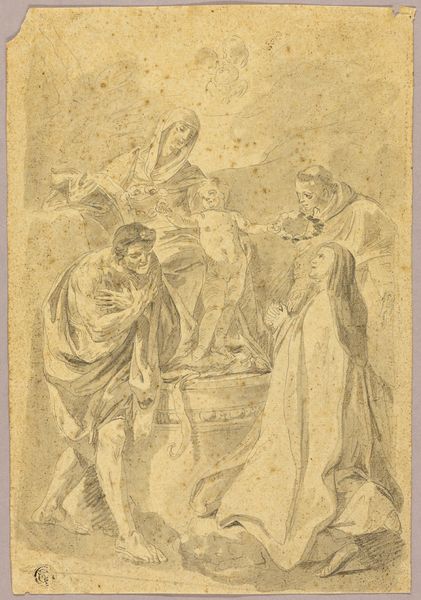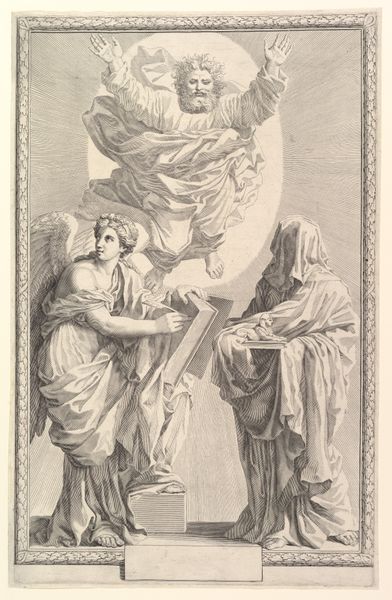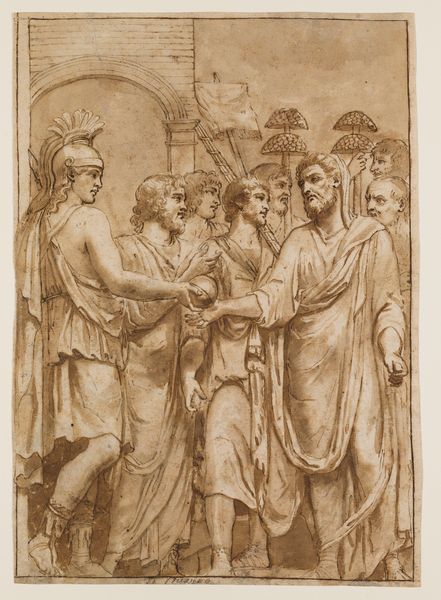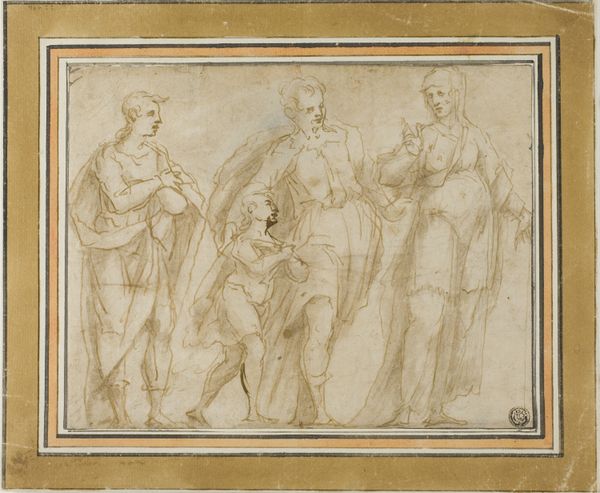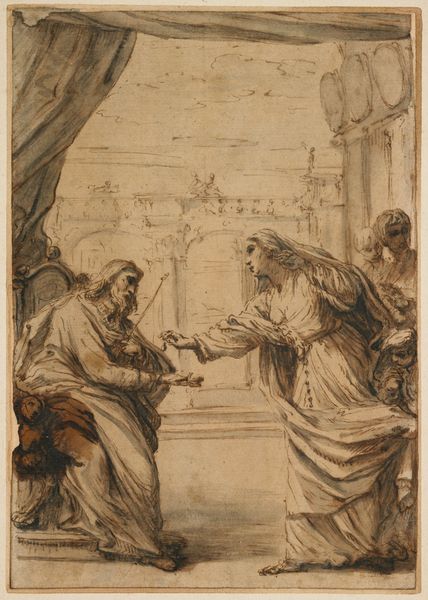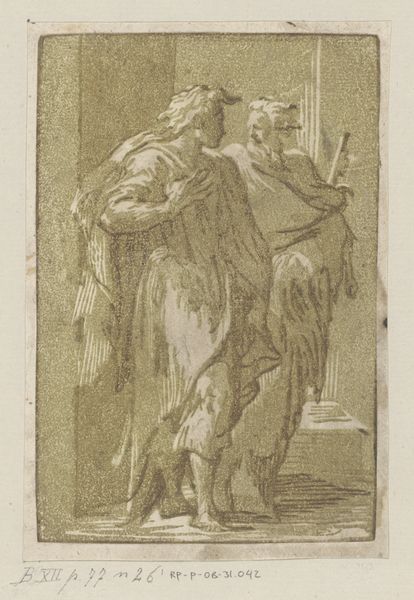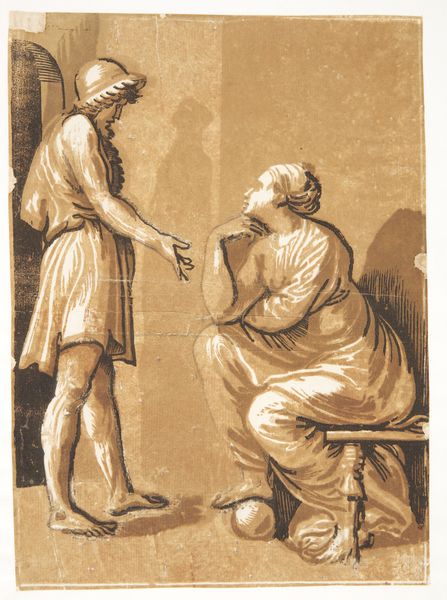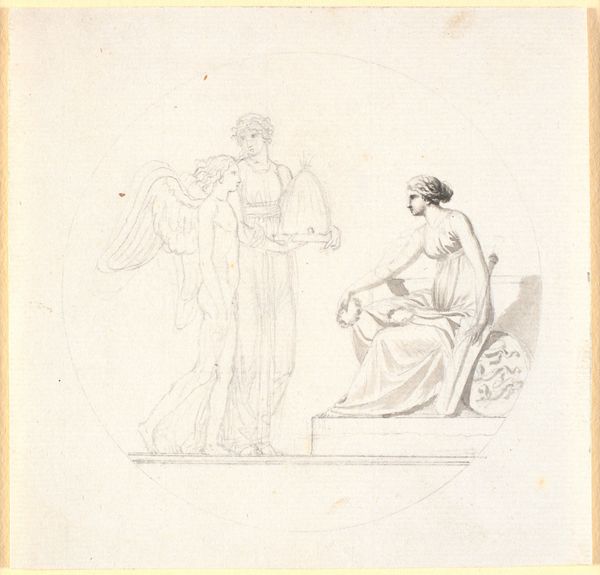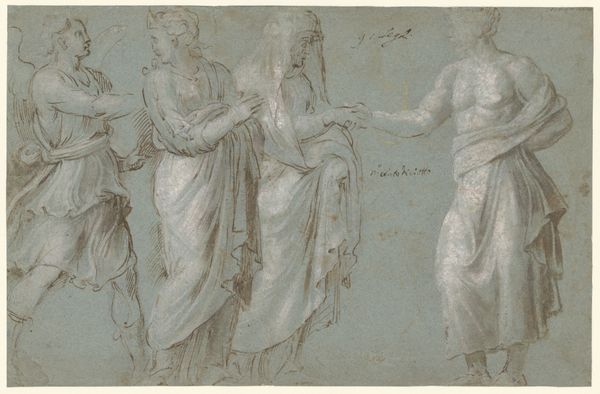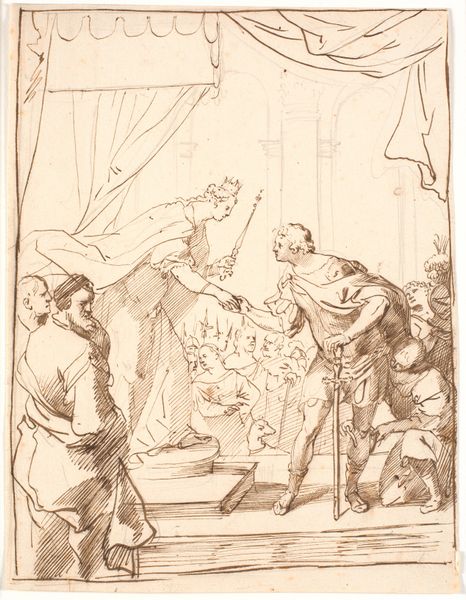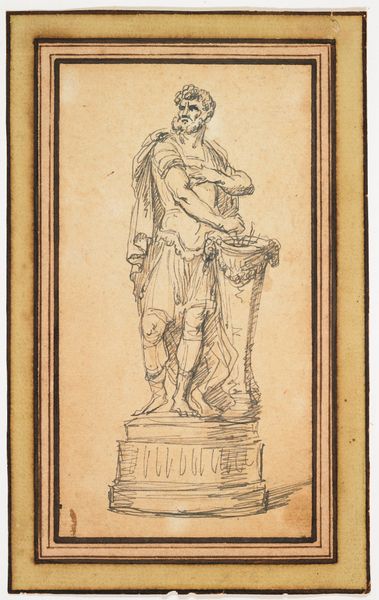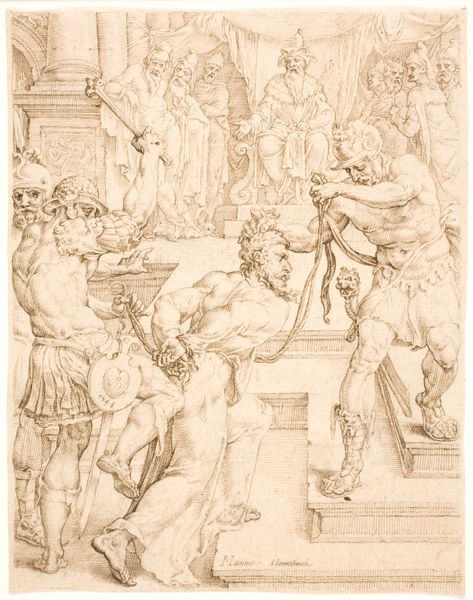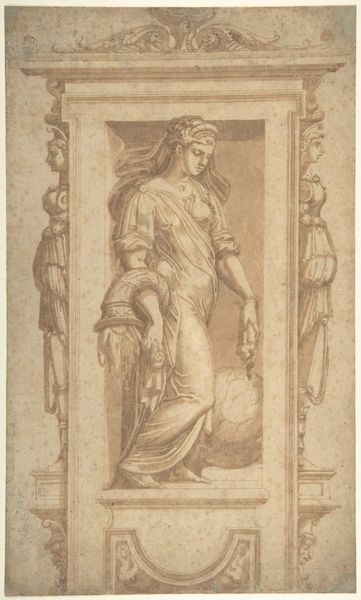
A man and a woman in antique costumes, each with scales and a ruler, in front of a wall with paintings. A purse on the floor in front of the man 1612 - 1666
0:00
0:00
drawing, dry-media, charcoal
#
portrait
#
drawing
#
medieval
#
allegory
#
charcoal drawing
#
dry-media
#
charcoal
#
history-painting
#
academic-art
Dimensions: 210 mm (height) x 146 mm (width) (bladmaal)
Curator: Looking at this charcoal drawing, my immediate sense is of an almost haunting stillness. It’s got this hushed, scholarly aura. Editor: Indeed, and the drawing we're observing is "A man and a woman in antique costumes, each with scales and a ruler, in front of a wall with paintings. A purse on the floor in front of the man" attributed to Giovanni Angelo Canini, made sometime between 1612 and 1666. It currently resides in the Statens Museum for Kunst. The interesting use of charcoal really emphasizes the starkness, don’t you think? Curator: Absolutely, the monochromatic palette definitely lends to that timeless quality. I am drawn in particular, no pun intended, to the figures; their costumes appear like shadows draped about them, each carrying instruments, or more like totems... It has an odd atmosphere, almost dream-like. Editor: You’ve hit on something significant. This piece functions as an allegory, these figures standing as symbols of justice, maybe of wealth and power, especially considering the purse lying before the man. And see the array of framed images behind them? That suggests the importance of historical lineage or artistic legacy within the narrative. How are we meant to consider them in context of one another? Curator: Well, they add layers, don’t they? It is an artful backdrop that could tell a story all their own! The artist's mind must have been such a wonderland for such things to arrive here together! As I study the piece closer I can almost feel Canini teasing me, inviting me to decide how I feel about all of it! Is this even handed or slightly skewed? That's the delicious ambiguity I get from this piece. Editor: Yes! The intentionality is potent here, leaving the interpretation, and the ultimate “judgment,” really, in the viewer's hands. And that’s the genius of its timelessness; the questions it raises about values and power still resonate. Curator: It really does invite introspection on those concepts in relation to our lives! Like a whispered invitation to assess what "justice" feels like right now, doesn't it? Editor: Precisely, and perhaps that’s what keeps this piece engaging centuries later. It asks us to consider what we measure and what truly counts.
Comments
No comments
Be the first to comment and join the conversation on the ultimate creative platform.
